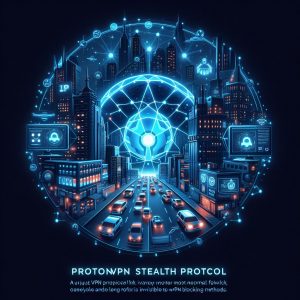Introduction
Virtual private networks (VPNs) have become essential tools for protecting online privacy, accessing restricted content, and bypassing internet censorship imposed by authoritarian regimes. However, many VPN protocols can still be detected and blocked by advanced firewalls or deep packet inspection systems.
To overcome this limitation, ProtonVPN introduced their proprietary Stealth protocol in 2022, built on WireGuard technology. Stealth utilizes stealthy, obfuscated connections that are far harder to identify as VPN traffic, allowing users to circumvent blocks and restrictions.
In this guide, we’ll dive into the key features of ProtonVPN’s Stealth protocol, how it provides enhanced privacy and censorship circumvention capabilities, and the technology powering it under the hood.

Key Features of Stealth Protocol
ProtonVPN designed their Stealth protocol with several innovations to make VPN connections virtually undetectable:
Anti-Censorship Improvements
Stealth uses an additional layer of TLS encryption that defeats most DPI blocking tools. This prevents deep packet inspection systems from identifying its VPN signatures.
Widespread Compatibility
The Stealth protocol is supported across Windows, Mac, Linux, iOS, and Android ProtonVPN apps. This ensures access on all major desktop and mobile platforms.
Higher Performance
Optimized for speed on both UDP and TCP transports, Stealth provides reduced latency compared to obfuscated protocols relying solely on UDP. Web browsing feels snappy and responsive.
Smart Protocol Switching
ProtonVPN apps with Stealth enabled will intelligently switch to other protocols like IKEv2/IPSec based on the network environment for optimal performance and reliability.

Benefits of Using the Stealth Protocol
Here are the major advantages users gain by connecting via ProtonVPN’s Stealth protocol:
Bypass Internet Censorship
Stealth allows users to bypass firewalls and access websites blocked by their internet service provider, employer, or government. It defeats most censorship attempts.
Enhanced Security
Stealth traffic remains encrypted end-to-end, protecting against surveillance and retaining a high level of security.
Improved Compatibility
Stealth works seamlessly with ProtonVPN features like VPN Accelerator and NetShield threat protection for an enhanced browsing experience.
How ProtonVPN’s Stealth Protocol Works
Under the hood, here is how ProtonVPN built their Stealth protocol for censorship circumvention and privacy:
TLS Basis
Stealth is derived from the TLS 1.3 transport encryption protocol and inherits its cryptographic schemes for secure key exchange. This makes blocking difficult.
Lightweight and Efficient
Unlike OpenVPN obfuscation, Stealth adds very little bandwidth and computational overhead enabling strong performance. The codebase is optimized for speed.
Obfuscated VPN Traffic
Stealth masks VPN packet contents to avoid deep packet inspection. To firewalls, Stealth traffic appears indistinguishable from normal HTTPS web browsing.
WireGuard Foundation
Stealth leverages cryptography and networking principles from WireGuard, including noise key exchange and ChaCha20 for encryption. This enhances reliability.

Conclusion
ProtonVPN’s proprietary Stealth protocol provides users with a next-generation tool for maintaining privacy online and circumventing censorship. Leveraging innovations like TLS obfuscation and WireGuard technology, Stealth allows VPN connections to fly under the radar of even advanced firewalls and deep packet inspection systems.
For ProtonVPN users whose work or personal circumstances require a more hardened VPN connection to bypass restrictions, Stealth delivers that capability without compromising on performance or compatibility. As internet censorship and surveillance continue growing globally, ProtonVPN’s Stealth protocol will likely become an increasingly essential feature for many users worldwide.